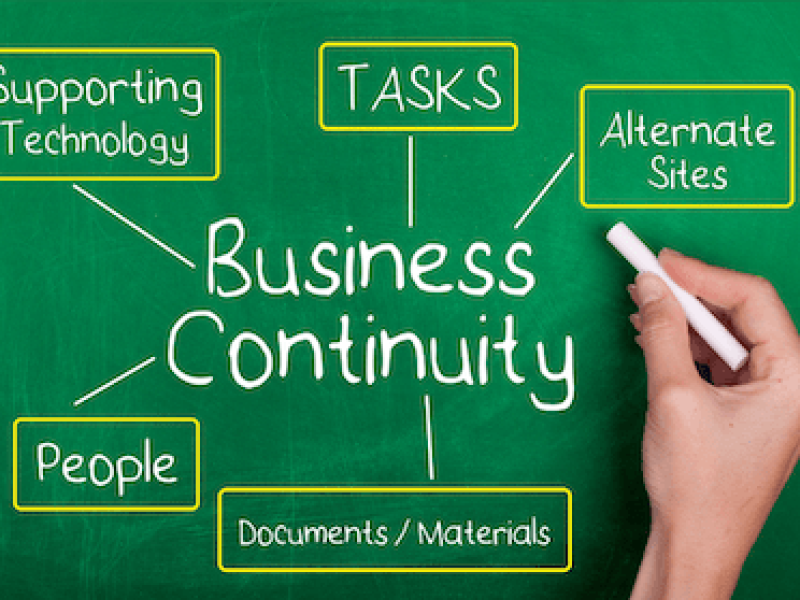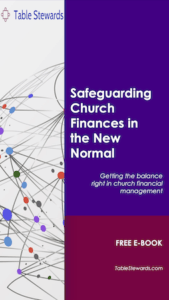Introduction
So, why is risk management necessary in churches and charities?
Risk management involves identifying risks, assessing their impact on the achievement of objectives and taking appropriate action to mitigate against the risks becoming real events.
Statistics show that 62% of organisations have experienced a critical risk event. Nevertheless, boards tend to devote only 9% of their meeting time to risk management and only 6% of directors believe their organisations manage risks effectively.
Without effective risk management, risks become real events which in turn, hinder churches and charities from maximising their purpose.
Churches and charity organisations therefore need to understand what risks they face and why the risks should be well managed.
This article takes you through what Risk is, what Risk Management is all about, its relevance to churches and charity organisations, and why risk management is necessary in churches and charities.
Table Stewards uses a light-hearted scene setting approach to introduce its topics, but if you would prefer to dive straight into any part of the article, please click the relevant link in the table of contents above.
Scene Setting
It is raining heavily and the Learning and Development Committee are converging for their pre-meeting with Coach Emmanuel before today’s masterclass.
Sister Mary: With this heavy rain, I bet the children’s church annex is leaking again. This would mean we can’t use the junior class for Sunday School tomorrow. I just wish the facilities team arranged for the roof to be fixed before this season of rains started. We reported it two months ago!
Leader Badtrus: The leaking roof was fixed two weeks ago, so I guess there should be no problems tomorrow.
Elder Sam: Good the roof is fixed but there would be no junior class in the Sunday School tomorrow as the teacher, Lydia, had a baby two days ago, and the assistant teacher travelled and should be back in 2 weeks.
Sister Jane: Wow! Great news about Lydia’s baby. How come there is no cover for both teachers and we have to close the class. You know how the children look forward to their junior class teachings each Sunday. It would be disheartening to disappoint them.
Sister Mary: Imagine the noise and unrest if they all have to sit with their parents in church! The Children’s church leader should have foreseen events like this and made arrangements. At least everyone could see that Lydia was heavily pregnant!
Coach Emmanuel: That is an example key people dependency that calls for effective risk management.
Sister Jane: Risk management? You mean, Lydia and her assistant are risks?
Coach Emmanuel: Very funny! The risk here is that the key people depended on for vital services or activities are unavailable resulting in disappointment to people who depend on those services, leading to loss of trust in the ability of the church to manage its operations, and to reputation damage.
The risk could have been managed with having contingency arrangements in place that can be activated in circumstance like this.
Let’s proceed with the masterclass to learn what risk management is all about and why risk management is necessary in churches and charities.
What is Risk?
Risk has to do with uncertainty. Risk is defined in international standards as ‘the effect of uncertainty on objectives. This can include the organisation’s purpose, vision, and values as well as the goals and targets articulated at different levels in the organisation.’
Put simply,
- Risk is uncertainty of the outcome of an event, strategy or activity.
- Risk is any event that can prevent an organisation from achieving its objectives.
- Risk can also include failure to take advantage of opportunities.
What is Risk Management all about?
Uncertainty is part of daily life for individuals as well as organisations. We do our best to manage risks by taking steps to limit the effect of perceived uncertainties.
As individuals, we manage risks every day and sometimes subconsciously. For example, we lock our front door when we are leaving our home empty, or our car when we park it in a mall car park.
Why do we do this even when we are in neighbourhoods deemed to be safe? It is human nature to do what it can to manage uncertainties.
Locking our doors even when there is no danger in sight gives us the peace of mind that we have taken reasonable steps just in case danger suddenly appears.
This uncertainty of outcome, prompts us to take action that we deem to be a proportionate response.
If we perceive security threats in the neighbourhood, or just for further peace of mind, we may also instal security systems and cameras to alert of activity around the house.
This protective instinct that helps us ensure that we can achieve our goals with minimum interruption by taking reasonable precautions, is what risk management is all about.
It should be no different in churches and charities. Churches and charities must manage risks to maximise the reasons for their existence.
Risk management is the identification of risks, assessment of the likelihood and impact of the risk occurring, and selecting appropriate responses to manage the risks to the level deemed acceptable to the organisation.
What is the relevance of Risk Management in Churches and Charities?
A church or charity has a mission, vision, and core values. It delivers these through its strategy and business objectives, making choices on how to go about achieving them.
Any choice of strategy, approach, activity or process carries risk, which could range from external factors to inherent risks.
Failure to manage risks, which then materialise, could negatively affect the church or charity in these main areas:
- Reputation damage
- Financial loss
- Impact on the Safety of People such as avoidable harm or loss of lives.
Churches and charities therefore need to be clear on the objectives they are trying to achieve, and identify and understand the risks that they face.
They should take appropriate and commensurate measures to address these risks, to maximise the chances of achieving their objectives. For example, to mitigate against financial loss, implementing good internal controls is a must.
Why should Churches and Charities manage Risks?
Risks can materialise and stop you
While risks are uncertainties, if unmanaged, a risk can happen in reality and have negative consequences ranging from unplanned disruptions to show-stopping events.
For example, if the risks to health and safety of the church premises are not identified and managed, an incident that affects the safety of individuals could lead to prolonged external investigations, discouragement among members, and financial consequences either via fines, litigation and corrective actions.
Not only should churches and charity organisations pay attention to risks that affect their espoused objectives, they should also consider risks to the enabling infrastructure, such as their premises, IT systems and regulatory environment.
Risk management helps you choose the optimum path to achieving your objectives
The board or governing body of a church or charity is responsible for oversight of the funds and assets and the achievements of its objectives.
By understanding the risks you face, you can make choices based on your church’s or charity’s appetite for each risk.
If a risk is too high to take and any possible mitigations are not seen as worth the effort, this gives an indication that the course of action may not be worth taking.
For example, a church seeking a larger premises may see an affordable property with great potential for expansion but carries a 40% risk of flooding based on its location. The church may consider going ahead with the purchase but mitigating the flood risks with insurance.
It may also consider that the impact of a flooding event would put the church out of use for months, which would affect its members and objectives, even with insurance mitigation.
The church board may consider that the risks of the church being out of use for months is too great compared to insurance repairs, and rather not consider that property.
However, there could be occasions when a church may decide to still go ahead with a high risk activity with potential for high benefits, thereby accepting the risks in a considered manner.
If despite the risk of flooding being stated as 40%, no flooding has happened say in the last 15 years, and the board has sought relevant expert advice, they may decide to accept the risk and go ahead.
As long as the risks to paths of action are identified and mitigations taken to the extent that the church governing body is satisfied that the residual risk meets its appetite for risk, then due diligence is served.
Risk management can point you to opportunities
Risk management is not just about mitigating what could go wrong, but also about identifying opportunities that could otherwise be missed.
For example, in countries like England, the government gives charities a refund of tax on donations made by tax payers, known as Gift Aid.
Effective risk management would mean that churches and charities considering risks to their income, would consider not maximising the Gift Aid opportunity as a risk, and make every effort to take advantage of it.
Risk management is good stewardship
Stewardship is all about taking good care and responsibility for what has been entrusted into your care.
To responsibly care for the people, resources and responsibilities entrusted to you requires a good understanding of what can derail the fulfilment of those responsibilities, and taking the right steps to mitigate against them.
Risk management helps inform allocation of resources
The actions and activities taken to manage risks often require resource allocation, be it people or funding, to achieve expected outcomes.
Effective risk management allows you to have robust risk information, assess overall resource needs, and prioritise resource deployment and financial allocation to maximise outcomes with finite resources.
Risk management can be a regulatory requirement
Churches that are registered charities with income above a certain limit may be required by statute for their trustees to effectively manage risks to the achievement of key objectives.
In England & Wales, the Charity Commission which regulates charities, mandates those charities that are required by law to have their accounts audited to make a risk management statement in their trustees’ annual report confirming that ‘…the charity trustees have given consideration to the major risks to which the charity is exposed and satisfied themselves that systems or procedures are established in order to manage those risks.’
You should be aware of the statutory requirements for your church or charity in its country of registration.
Conclusion
This gives a useful overview of why risk management is necessary in churches and charities. Risk is part of everyday life but can stop or hinder churches if not identified and effectively managed.
Good risk management is good stewardship and helps churches and charities make informed decisions and take advantage of opportunities. Read about how to implement good risk management in our 6 Steps to Risk Management in Churches and Charities.
Effective internal controls are an important aspect of mitigating risks. Read more about why churches need good internal controls. Also learn more about how Segregation of duties helps guard against the risk of fraud and error.








